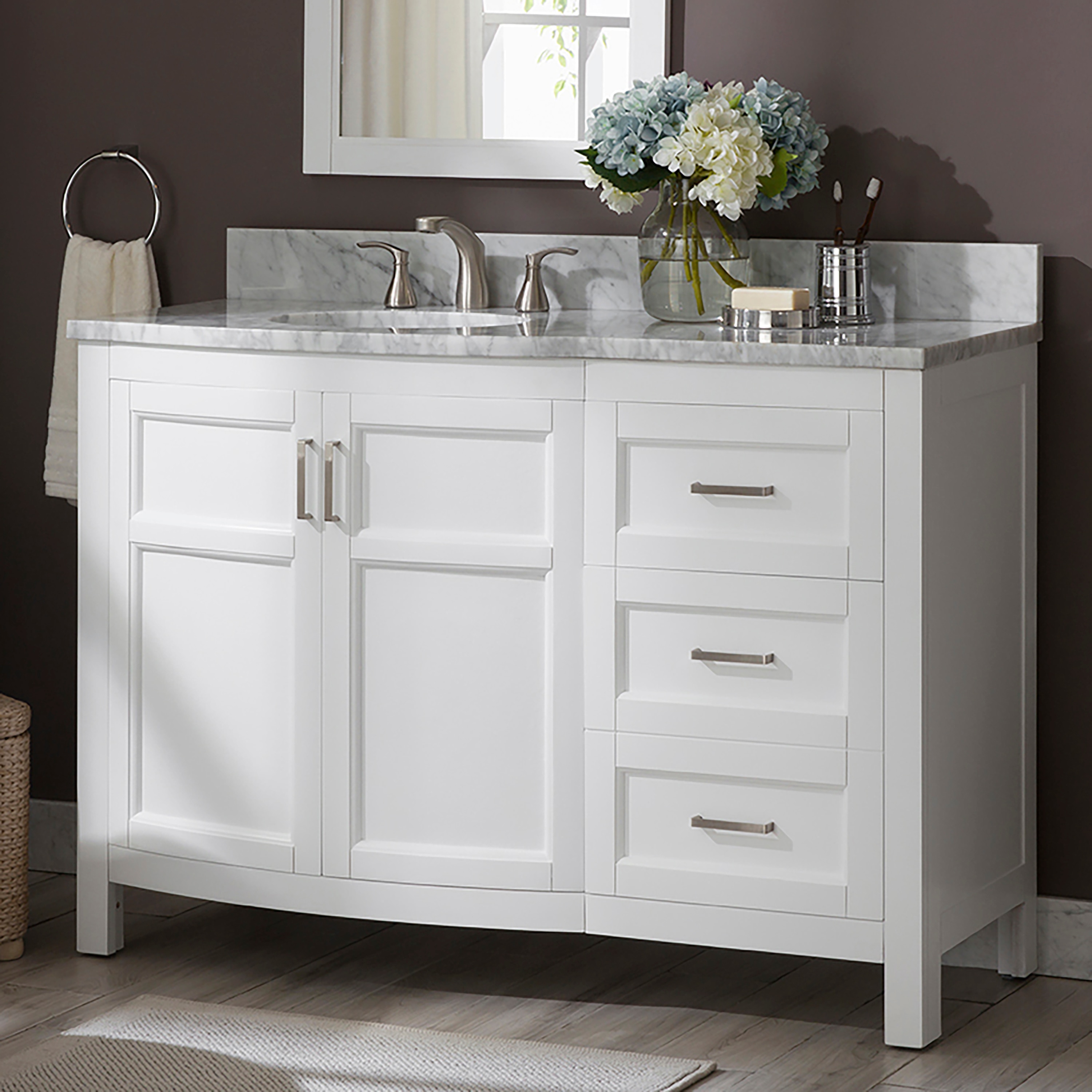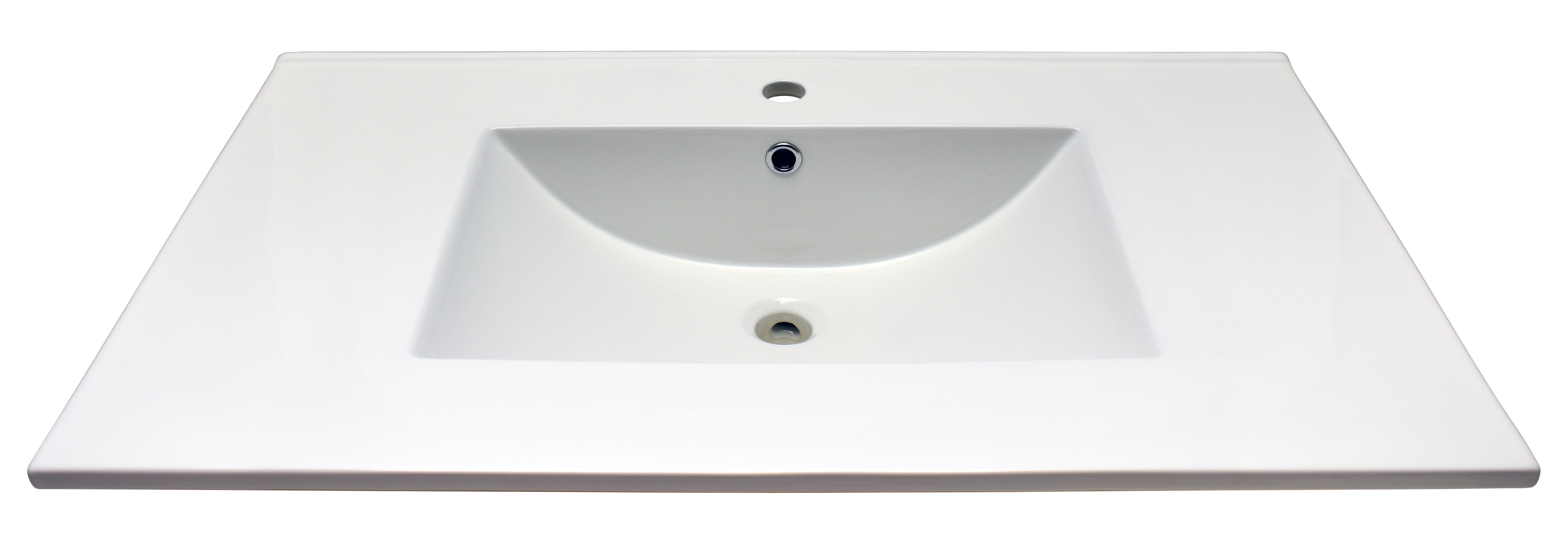Bathroom Vanity Top Materials

Choosing the right material for your bathroom vanity top is a crucial decision, as it impacts both the aesthetics and functionality of your bathroom. The vanity top is a focal point, so it should complement your bathroom’s style and withstand the daily wear and tear of a high-moisture environment.
Natural Stone
Natural stone, such as granite, marble, and quartz, is a popular choice for bathroom vanity tops due to its elegance and durability. Each slab is unique, offering a distinctive look and feel.
Advantages of Natural Stone
- Durability: Natural stone is highly resistant to scratches, heat, and stains, making it a long-lasting choice.
- Beauty: The unique patterns and colors found in natural stone add a touch of elegance and sophistication to any bathroom.
- Heat Resistance: Natural stone can withstand high temperatures, making it ideal for bathrooms with steamy showers.
Disadvantages of Natural Stone
- Porosity: Some natural stones, like marble, are porous and can absorb liquids, making them susceptible to staining. Regular sealing is required to protect against stains.
- Cost: Natural stone is generally more expensive than other materials, especially for larger vanity tops.
- Maintenance: Natural stone requires regular cleaning and sealing to maintain its beauty and protect it from damage.
Engineered Stone
Engineered stone, also known as quartzite, is a man-made material that mimics the look and feel of natural stone. It is created by combining crushed natural stone with resin and pigments.
Advantages of Engineered Stone
- Durability: Engineered stone is extremely durable and resistant to scratches, stains, and heat.
- Variety: It comes in a wide range of colors and patterns, offering flexibility in design.
- Low Maintenance: Engineered stone is relatively low-maintenance, requiring only regular cleaning with mild soap and water.
Disadvantages of Engineered Stone
- Cost: Engineered stone is generally more expensive than solid surface materials but less expensive than natural stone.
- Limited Uniqueness: While engineered stone offers a variety of colors and patterns, it lacks the unique character of natural stone.
Solid Surface Materials
Solid surface materials, such as Corian and acrylic, are non-porous and seamless, making them ideal for bathroom vanity tops. They are available in a variety of colors and patterns, and can be easily repaired if damaged.
Advantages of Solid Surface Materials
- Seamless Design: Solid surface materials can be seamlessly joined, creating a smooth and elegant look.
- Easy Maintenance: They are non-porous and stain-resistant, making them easy to clean and maintain.
- Cost-Effective: Solid surface materials are generally more affordable than natural stone or engineered stone.
Disadvantages of Solid Surface Materials
- Heat Sensitivity: Solid surface materials can be susceptible to heat damage, so it is important to use trivets or hot pads to protect the surface.
- Durability: Solid surface materials are less durable than natural stone or engineered stone and may be prone to scratches or chips.
Bathroom Vanity Top Materials Comparison, Bathroom vanity tops 37 x 22
| Material | Advantages | Disadvantages | Price Range |
|---|---|---|---|
| Natural Stone (Granite, Marble, Quartz) | Durable, beautiful, heat resistant | Porous (some stones), expensive, requires regular maintenance | $50-$200 per square foot |
| Engineered Stone (Quartzite) | Durable, variety of colors and patterns, low maintenance | Expensive, limited uniqueness | $40-$150 per square foot |
| Solid Surface Materials (Corian, Acrylic) | Seamless design, easy maintenance, cost-effective | Heat sensitivity, less durable | $20-$80 per square foot |
Vanity Top Styles and Designs

A bathroom vanity top is more than just a surface; it’s a design element that can completely transform the look and feel of your bathroom. With countless options available, you can create a space that reflects your personal style, from classic elegance to modern minimalism.
Traditional Vanity Top Styles
Traditional vanity tops exude timeless charm and sophistication. They often feature intricate details, classic materials, and a focus on craftsmanship.
- Materials: Marble, granite, quartz, and wood are popular choices for traditional vanity tops. These materials are durable, elegant, and often come in warm, earthy tones.
- Edge Profiles: Traditional vanity tops often feature ornate edge profiles, such as ogee, bullnose, or cove. These profiles add visual interest and a sense of refinement.
- Sink Styles: Traditional vanity tops often pair with undermount sinks, which are seamlessly integrated into the countertop for a sleek and elegant look. Vessel sinks, with their prominent bowl, can also add a touch of traditional flair.
Modern Vanity Top Styles
Modern vanity tops prioritize clean lines, minimalist design, and a focus on functionality. They often feature sleek materials and geometric shapes.
- Materials: Modern vanity tops often feature materials like quartz, concrete, or engineered stone. These materials are durable, low-maintenance, and available in a wide range of colors and finishes.
- Edge Profiles: Modern vanity tops typically feature simple edge profiles, such as eased edges, flat edges, or bevels. These profiles maintain a clean and streamlined aesthetic.
- Sink Styles: Modern vanity tops often pair with integrated sinks or undermount sinks. These sinks seamlessly blend into the countertop, creating a minimalist and cohesive look.
Contemporary Vanity Top Styles
Contemporary vanity tops are a fusion of modern and traditional elements, blending sleek lines with a touch of warmth and sophistication.
- Materials: Contemporary vanity tops often feature a mix of materials, such as wood, stone, and metal. They may incorporate natural elements like wood grains or stone patterns, adding a touch of organic beauty.
- Edge Profiles: Contemporary vanity tops often feature a combination of simple and slightly more intricate edge profiles. They might have a flat edge with a subtle bevel or a rounded edge with a subtle curve.
- Sink Styles: Contemporary vanity tops are versatile and can accommodate a variety of sink styles, from undermount sinks to vessel sinks. The choice of sink style depends on the overall design aesthetic.
Farmhouse Vanity Top Styles
Farmhouse vanity tops embody rustic charm and a sense of warmth and comfort. They often feature natural materials, distressed finishes, and a touch of vintage appeal.
- Materials: Farmhouse vanity tops often feature natural materials like reclaimed wood, granite, or marble. These materials add a touch of rustic charm and character.
- Edge Profiles: Farmhouse vanity tops often feature simple edge profiles, such as eased edges or flat edges. These profiles complement the rustic aesthetic and create a sense of simplicity.
- Sink Styles: Farmhouse vanity tops often pair with apron-front sinks or vessel sinks. These sinks add a touch of vintage charm and complement the rustic style.
Industrial Vanity Top Styles
Industrial vanity tops embrace a raw and edgy aesthetic, featuring exposed materials, metallic accents, and a touch of urban grit.
- Materials: Industrial vanity tops often feature materials like concrete, metal, or reclaimed wood. These materials add a touch of ruggedness and industrial charm.
- Edge Profiles: Industrial vanity tops often feature simple edge profiles, such as flat edges or eased edges. These profiles maintain a clean and minimalist aesthetic.
- Sink Styles: Industrial vanity tops often pair with undermount sinks or vessel sinks. These sinks complement the edgy aesthetic and create a sense of industrial chic.
Installation and Maintenance: Bathroom Vanity Tops 37 X 22

Installing a bathroom vanity top is a DIY project that can be tackled with a little patience and the right tools. Whether you’re replacing an old top or installing a new vanity, understanding the process can save you time and frustration.
Installing a Bathroom Vanity Top
Installing a bathroom vanity top involves several steps, starting with preparing the base and ending with sealing the edges. The process is similar for most materials, but some steps might differ depending on the specific type of top.
- Prepare the Base: The first step is to ensure the base of the vanity is level and stable. Any unevenness or instability can cause the top to crack or break over time. Use a level to check the base and adjust it as needed using shims or other supports.
- Attach the Top: Once the base is prepared, you can attach the vanity top. Depending on the material and design of the top, the attachment method might vary. Some tops come with pre-drilled holes for mounting, while others might require you to drill your own.
- Seal the Edges: The final step is to seal the edges of the vanity top to prevent water damage and protect the material. Silicone sealant is commonly used for this purpose. Apply a thin bead of sealant along the edges of the top and smooth it out with your finger or a putty knife.
Maintaining a Bathroom Vanity Top
Maintaining a bathroom vanity top is crucial to preserving its beauty and functionality. Regular cleaning and proper care can help extend the lifespan of your vanity top and keep it looking its best.
- Cleaning Procedures: The cleaning procedure for a bathroom vanity top depends on the material. For natural stone tops, use a mild soap and water solution. Avoid abrasive cleaners and harsh chemicals that can damage the surface. For laminate tops, you can use a mild all-purpose cleaner.
- Stain Removal Methods: Stains can be a common problem with bathroom vanity tops, especially if they are made of natural stone. For minor stains, try using a mild soap and water solution. For tougher stains, you can use a specialized stone cleaner or consult a professional.
- Preventive Measures: There are several things you can do to prevent stains and damage to your bathroom vanity top. Wipe up spills immediately, avoid using harsh chemicals, and use a cutting board when working on the countertop.
Common Problems and Solutions
While bathroom vanity tops are generally durable, they can encounter certain problems over time.
- Cracks or Chips: Cracks or chips in a vanity top can be caused by impact or excessive weight. Depending on the severity of the damage, you may be able to repair it yourself using epoxy or contact a professional for a more permanent solution.
- Water Damage: Water damage can occur if the vanity top is not properly sealed or if there are leaks in the plumbing. Inspect the sealant regularly and address any leaks promptly to prevent water damage.
- Staining: Stains can be caused by spills, hard water, or other substances. For minor stains, try using a mild soap and water solution. For tougher stains, you may need to use a specialized cleaner or consult a professional.
